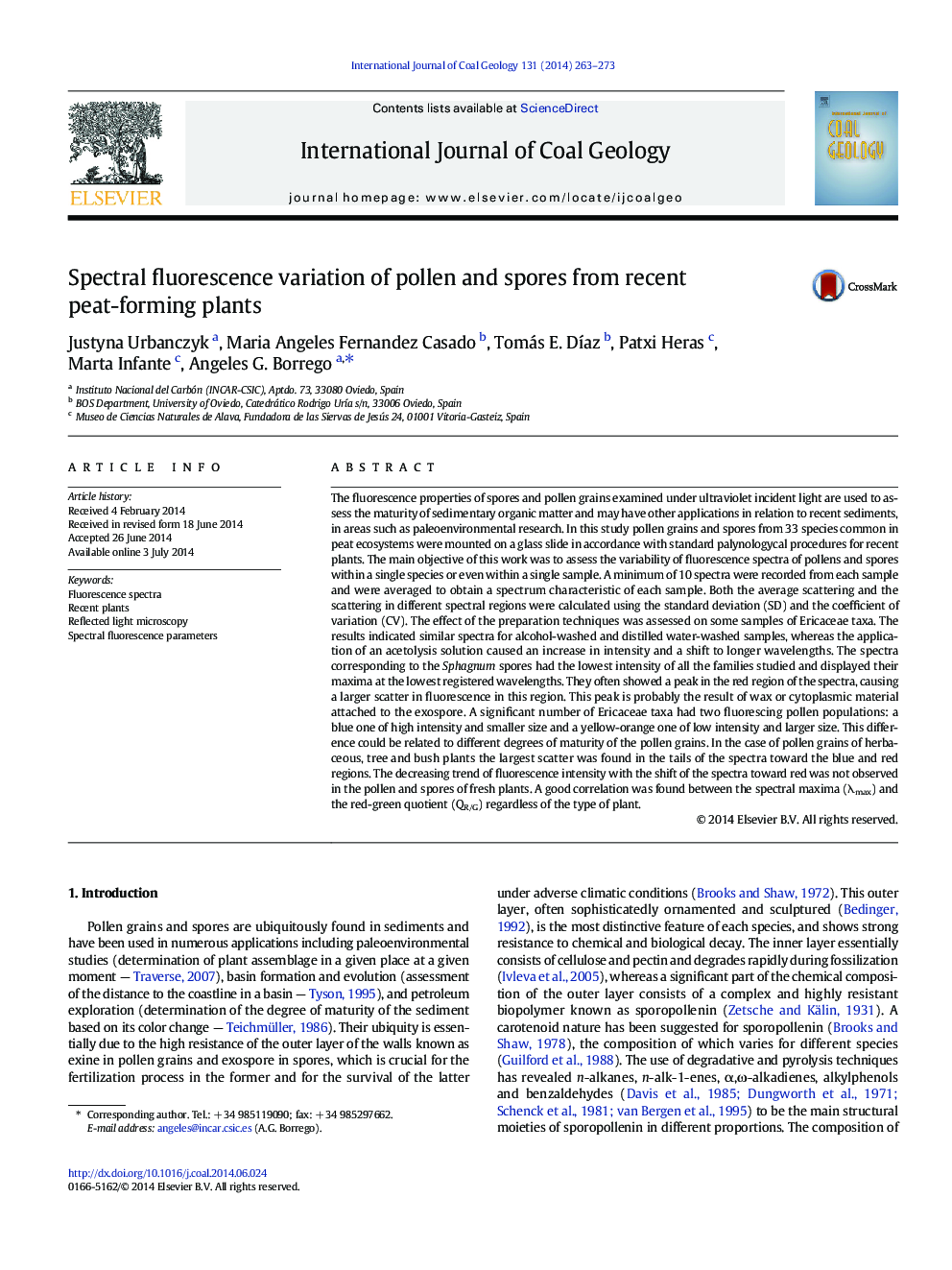| کد مقاله | کد نشریه | سال انتشار | مقاله انگلیسی | نسخه تمام متن |
|---|---|---|---|---|
| 1753041 | 1522566 | 2014 | 11 صفحه PDF | دانلود رایگان |
• Fluorescence spectra of spores and pollen of fresh peat-forming plants are studied.
• The spectra differ in intensity but have similar shape for each taxon.
• Effect of preparation techniques in the fluorescence is studied.
• Spores show more bluish and less intense spectra compared to pollen grains.
• A good correlation of red/green quotient and spectral maxima is observed.
The fluorescence properties of spores and pollen grains examined under ultraviolet incident light are used to assess the maturity of sedimentary organic matter and may have other applications in relation to recent sediments, in areas such as paleoenvironmental research. In this study pollen grains and spores from 33 species common in peat ecosystems were mounted on a glass slide in accordance with standard palynologycal procedures for recent plants. The main objective of this work was to assess the variability of fluorescence spectra of pollens and spores within a single species or even within a single sample. A minimum of 10 spectra were recorded from each sample and were averaged to obtain a spectrum characteristic of each sample. Both the average scattering and the scattering in different spectral regions were calculated using the standard deviation (SD) and the coefficient of variation (CV). The effect of the preparation techniques was assessed on some samples of Ericaceae taxa. The results indicated similar spectra for alcohol-washed and distilled water-washed samples, whereas the application of an acetolysis solution caused an increase in intensity and a shift to longer wavelengths. The spectra corresponding to the Sphagnum spores had the lowest intensity of all the families studied and displayed their maxima at the lowest registered wavelengths. They often showed a peak in the red region of the spectra, causing a larger scatter in fluorescence in this region. This peak is probably the result of wax or cytoplasmic material attached to the exospore. A significant number of Ericaceae taxa had two fluorescing pollen populations: a blue one of high intensity and smaller size and a yellow-orange one of low intensity and larger size. This difference could be related to different degrees of maturity of the pollen grains. In the case of pollen grains of herbaceous, tree and bush plants the largest scatter was found in the tails of the spectra toward the blue and red regions. The decreasing trend of fluorescence intensity with the shift of the spectra toward red was not observed in the pollen and spores of fresh plants. A good correlation was found between the spectral maxima (λmax) and the red-green quotient (QR/G) regardless of the type of plant.
Journal: International Journal of Coal Geology - Volume 131, 1 September 2014, Pages 263–273
